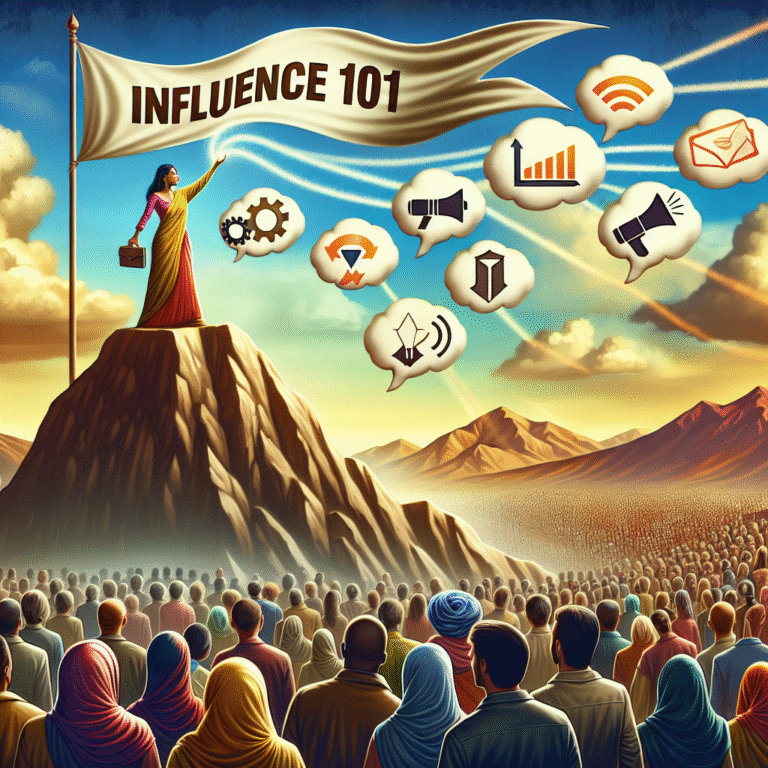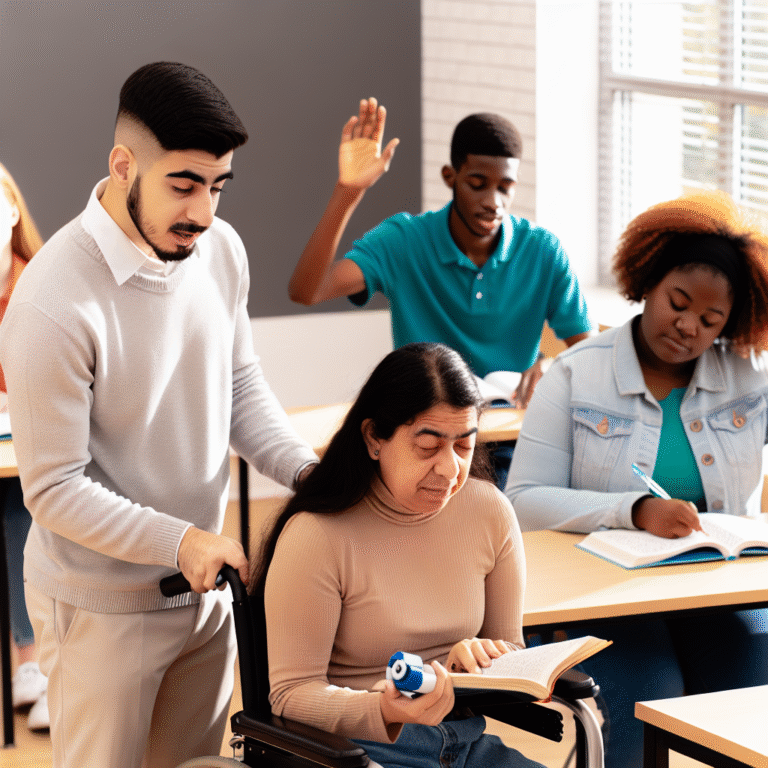
Introduction
Imagine walking into a bustling cafe where everyone seems to be sipping the latest trend in beverages. You order a plain black coffee, but as your eyes scan the crowd, you notice the enticing colors of the matcha lattes and turmeric turmeric smoothies. For a brief moment, you’re torn. Do you stick to your guns, or does the collective choice of the crowd sway you? This scenario reflects one underlying truth: the profound impact of peer pressure on our decision-making processes. This article explores The Invisible Hand: How Peer Pressure Drives Decision Making, elucidating the psychological mechanisms behind our choices and illustrating real-world examples that underscore these dynamics.
Understanding Peer Pressure
What is Peer Pressure?
Peer pressure refers to the influence that social groups exert on individuals, shaping their decisions, behaviors, and even beliefs. It comes in two forms: constructive and destructive. While constructive peer pressure can lead to positive outcomes, such as adopting healthier habits, destructive peer pressure often leads individuals down a path of conformity that may result in detrimental choices.
The Role of Social Identity
Our decisions are frequently driven by our desire to belong. Social identity theory posits that individuals categorize themselves and others based on group affiliations—this can relate to anything from clothing style to political beliefs. Understanding this concept is vital for grasping The Invisible Hand: How Peer Pressure Drives Decision Making, as our choices are often influenced by our desire to maintain or enhance our social standing within a group.
The Psychology Behind Decision-Making
The Confirmation Bias
Humans have a propensity to gravitate towards information and behaviors that confirm existing beliefs. This psychological phenomenon can amplify peer pressure’s effects. The more a behavior is reinforced by social circles, the more likely individuals are to adopt it, regardless of its personal alignment.
Cognitive Dissonance
When one’s choices conflict with their internal values, it creates cognitive dissonance, a feeling of discomfort that prompts individuals to either rectify their beliefs to match their actions or change their behaviors entirely. Peer pressure frequently exacerbates this situation, compelling individuals to choose conformity over authenticity, thus shedding light on The Invisible Hand: How Peer Pressure Drives Decision Making.
Case Studies Illustrating Peer Pressure
1. The Stanford Prison Experiment
The Stanford Prison Experiment conducted in 1971 is a seminal case where peer dynamics eerily illustrate The Invisible Hand: How Peer Pressure Drives Decision Making. College students were assigned roles as guards and prisoners, leading to alarming findings about how group norms can dictate behavior. The guards quickly adopted brutal tactics, spurred on by the constructed environment and peer expectations, showcasing the potent force of peer pressure.
Analysis
This experiment underlines the lengths to which individuals might go to conform to group expectations. The pressure to maintain the established power dynamics transformed ordinary individuals into perpetrators of cruelty in a distressingly short time.
2. The Asch Conformity Experiments
Solomon Asch’s classic conformity experiments in the 1950s showcased how peer pressure could lead participants to conform to incorrect answers when influenced by group consensus. Despite knowing the right choice, individuals frequently succumbed to the incorrect majority, illustrating The Invisible Hand: How Peer Pressure Drives Decision Making.
Analysis
The Asch experiments give critical insights into the ways group dynamics can overpower individual reasoning. When faced with the discomfort of standing out, many opted for social acceptance over accurate judgment.
3. Social Media Trends
In our digital age, social media platforms serve as powerful amplifiers of peer pressure. A case in point is the rise of TikTok trends that can lead to both positive movements, like fitness challenges, and detrimental fads, such as dangerous stunts. The Invisible Hand: How Peer Pressure Drives Decision Making resonates strongly here, as individuals are often swayed by likes, shares, and followers, pushing them to conform to popular trends.
Analysis
Social media exemplifies modern peer pressure, where the desire to fit in can lead users to make decisions that may not align with their authentic selves, ultimately affecting their well-being and self-image.
The Impact of Peer Pressure on Different Demographics
Adolescents
Teenagers are particularly susceptible to peer pressure, often leading them to engage in risky behaviors, such as substance abuse or reckless driving. The Invisible Hand: How Peer Pressure Drives Decision Making influences everything from fashion choices to academic integrity in this age group.
Adults and Workplace Dynamics
In professional settings, peer pressure can be equally potent. Employees might feel pressured to conform to a workplace culture that may perpetuate unhealthy work-life balance or unethical practices. Decisions made in this environment can have far-reaching consequences, reinforcing the relevance of The Invisible Hand: How Peer Pressure Drives Decision Making in organizational contexts.
Mitigating Negative Peer Pressure
Cultivating Self-Awareness
To combat negative peer pressure, individuals must develop self-awareness. Recognizing when peer dynamics sway decisions encourages more rational thinking, aligning choices with personal values.
Building Resilience
Strengthening one’s resolve is effective in resisting peer influence. This can entail setting clear personal goals and fostering relationships that encourage authenticity rather than conformity.
Conclusion
The Invisible Hand: How Peer Pressure Drives Decision Making is a compelling reminder that our choices are not made in isolation. Whether it’s sipping on a matcha latte instead of black coffee or conforming to workplace culture, understanding the mechanisms of peer pressure empowers us to make conscious choices. By becoming aware of these dynamics, we can navigate social influences more effectively, allowing our authentic selves to shine through in a world rife with subtle nudges toward conformity.
FAQs
1. How can I identify peer pressure in my life?
Peer pressure manifests as a feeling of discomfort when choosing a different path than the group. It is essential to pay attention to moments when you feel compelled to act against your beliefs to fit in.
2. Can peer pressure lead to positive outcomes?
Yes! Constructive peer pressure can foster good habits, like adhering to a fitness regimen or encouraging academic excellence among peers.
3. What strategies help in resisting peer pressure?
Building self-awareness, developing strong self-esteem, and seeking supportive friendships are effective strategies for resisting negative peer pressure.
4. Is peer pressure more pronounced among teenagers or adults?
While teenagers often face stronger peer pressure due to their developmental stage, adults are also susceptible, particularly in professional settings.
5. How does social media influence peer pressure?
Social media amplifies peer pressure by showcasing popular trends and lifestyles, which can lead individuals to conform to these standards, sometimes at the expense of their well-being.
In sum, The Invisible Hand: How Peer Pressure Drives Decision Making serves as both a powerful influence and a tool for understanding the choices we make in various aspects of our lives. Recognizing this can empower individuals to embrace their identities and make decisions that truly resonate with their authentic selves.










